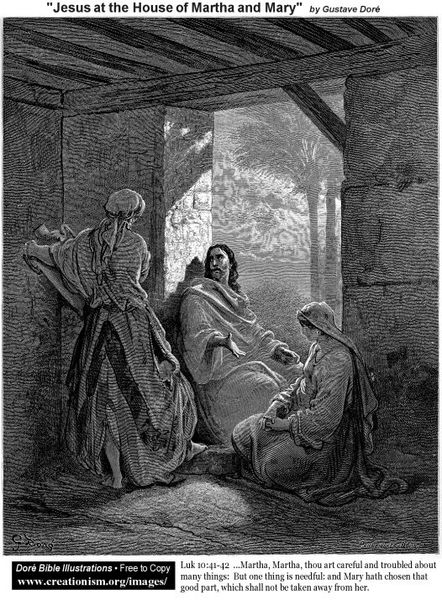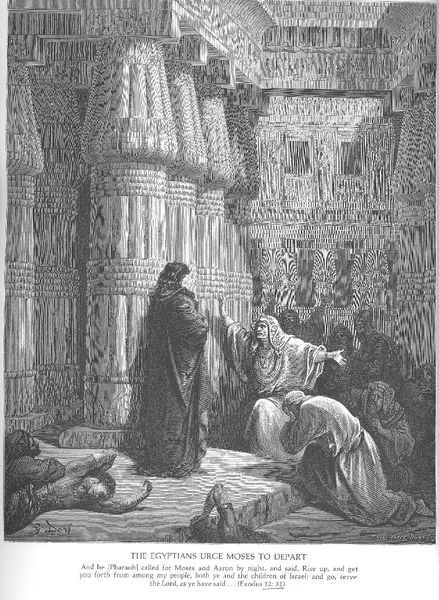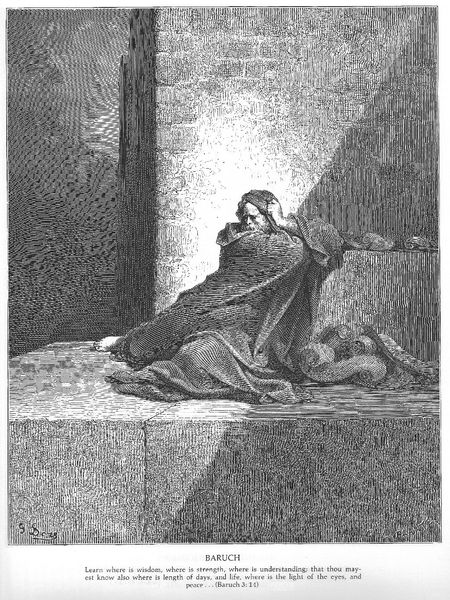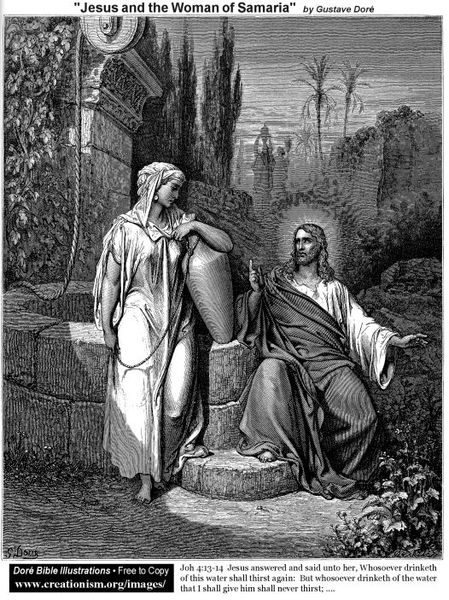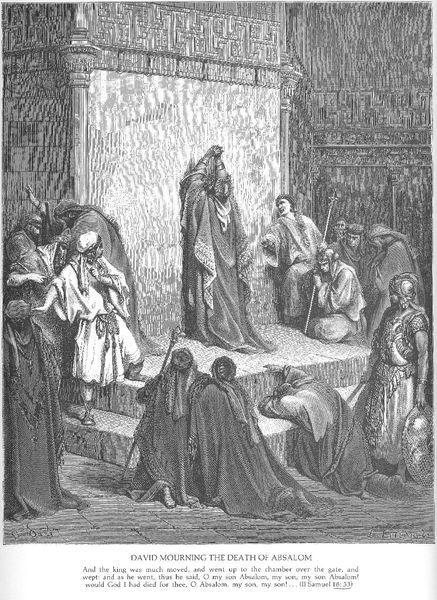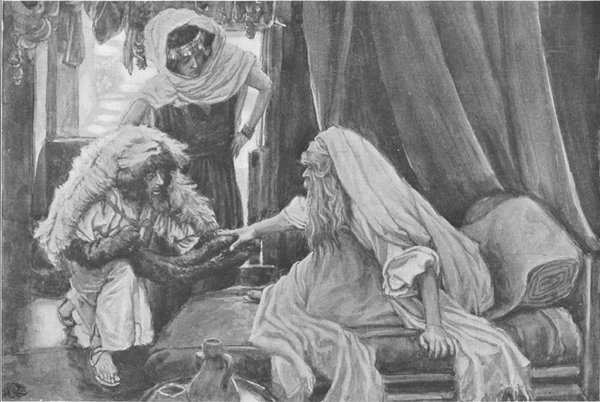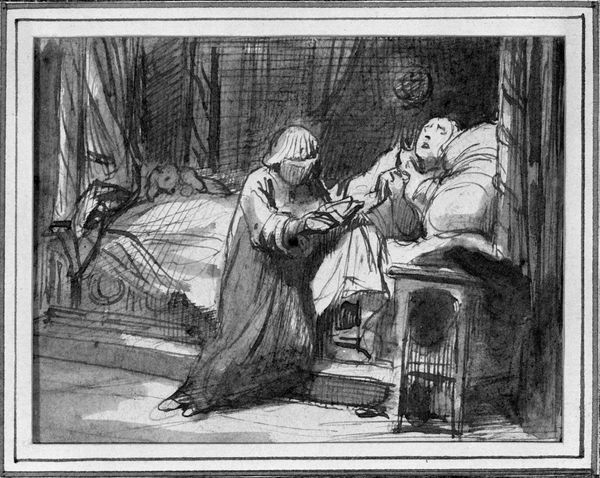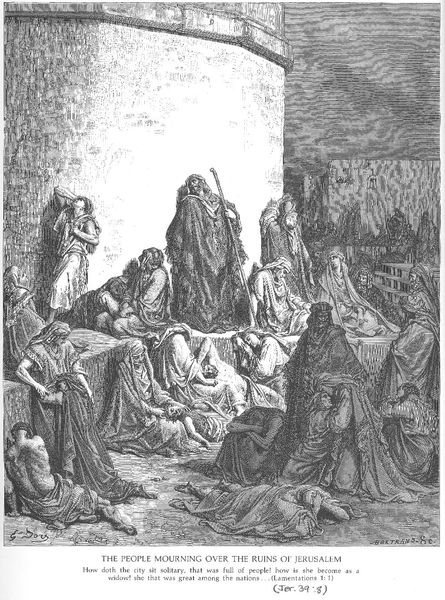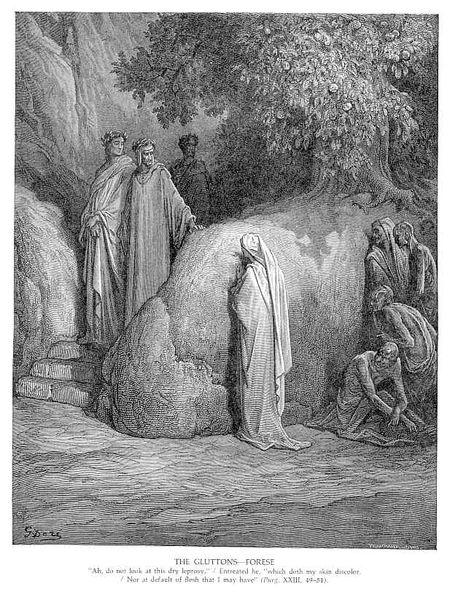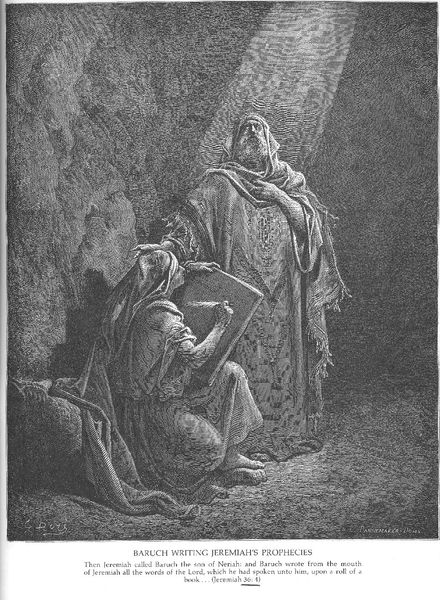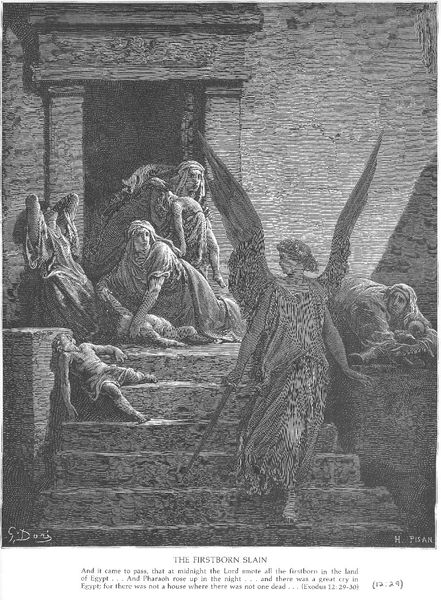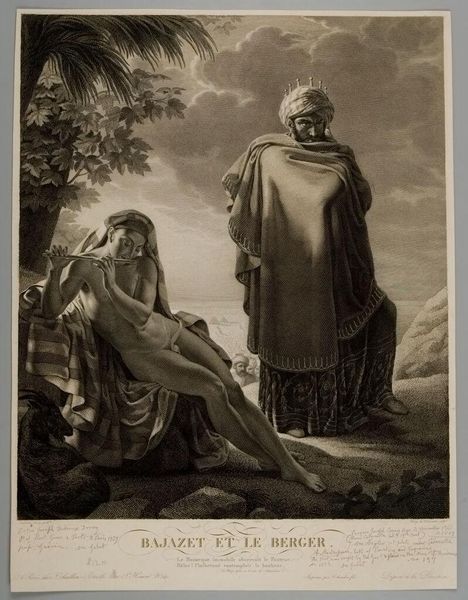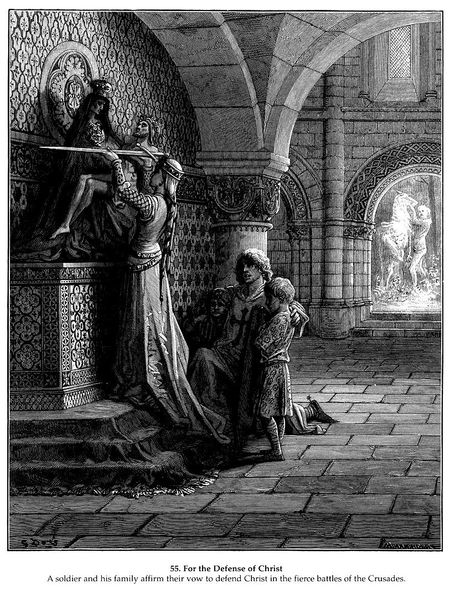
drawing, print, photography, charcoal, engraving
#
drawing
# print
#
pencil sketch
#
charcoal drawing
#
charcoal art
#
photography
#
romanticism
#
christianity
#
portrait drawing
#
genre-painting
#
charcoal
#
history-painting
#
engraving
Copyright: Public domain
Editor: Here we have "Samson and Delilah," an engraving by Gustave Dore. It strikes me as a very dramatic rendering of this well-known biblical scene. What cultural meanings do you see embodied here? Curator: Note how Dore situates this moment of betrayal within an almost theatrical space. The heavy drapes, the shadowed room… it's ripe with psychological tension. Consider the weight of hair in this narrative— Samson's hair is not merely a physical attribute, but a potent symbol, holding both divine promise and a deeply rooted cultural connection to masculinity and power. Editor: So the cutting of the hair is more than just a physical act; it’s a symbolic castration, if you will? Curator: Precisely. Think of other instances where hair plays a symbolic role in cultural narratives - ritualistic head-shaving or long unshorn locks. These physical symbols resonate with cultural memories, touching upon deeper psychological fears of loss, emasculation, and the vulnerability that comes with revealing one's secrets. Delilah, with her veiled head and calculating gaze, represents the archetypal temptress, doesn't she? Editor: Yes, there's almost a predator/prey dynamic at play. I hadn’t really considered all of the implications of the hair… Curator: It is a powerful image, isn't it? And Dore’s romantic style certainly amplified that cultural tension. What resonates with you now, seeing it with those associations? Editor: I'm struck by how symbols in art continue to accumulate layers of meaning over time. The drama becomes deeper with each added cultural context.
Comments
No comments
Be the first to comment and join the conversation on the ultimate creative platform.
